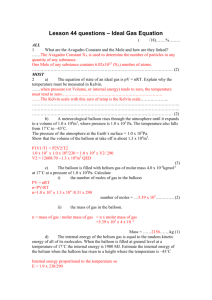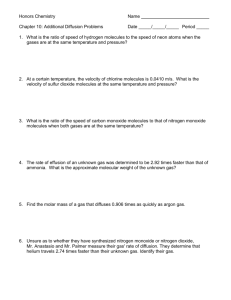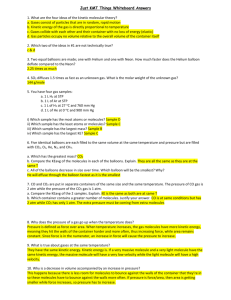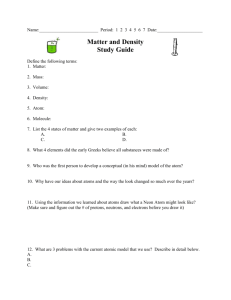Kinetic Theory, Molar Mass, Rates of Diffusion
advertisement
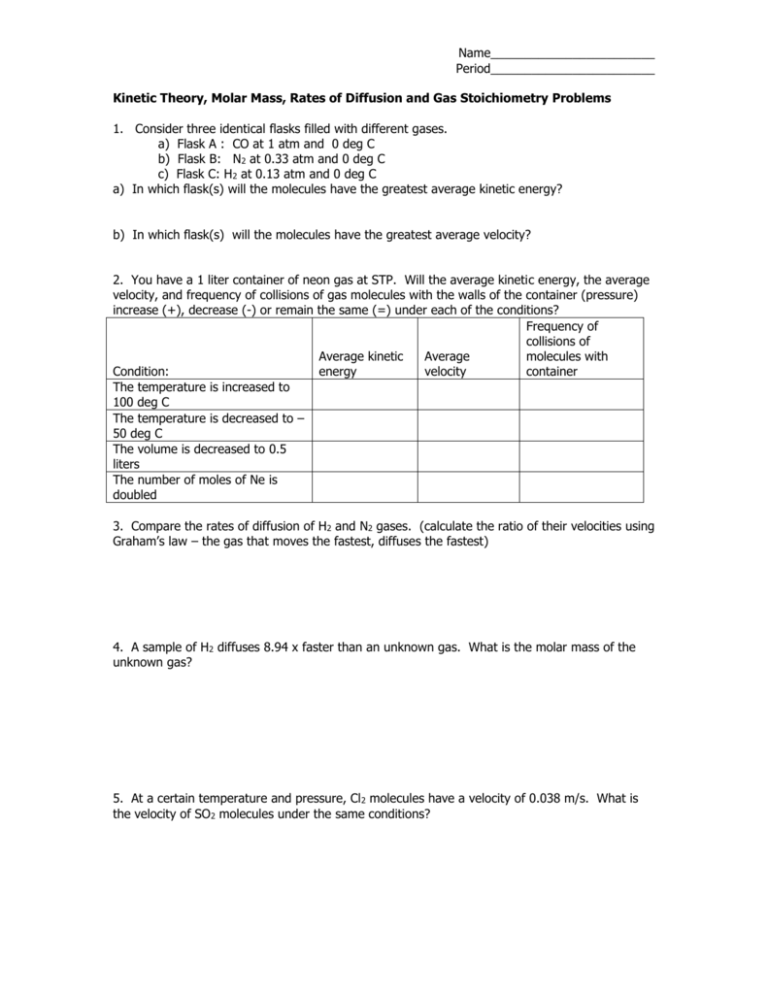
Name________________________ Period________________________ Kinetic Theory, Molar Mass, Rates of Diffusion and Gas Stoichiometry Problems 1. Consider three identical flasks filled with different gases. a) Flask A : CO at 1 atm and 0 deg C b) Flask B: N2 at 0.33 atm and 0 deg C c) Flask C: H2 at 0.13 atm and 0 deg C a) In which flask(s) will the molecules have the greatest average kinetic energy? b) In which flask(s) will the molecules have the greatest average velocity? 2. You have a 1 liter container of neon gas at STP. Will the average kinetic energy, the average velocity, and frequency of collisions of gas molecules with the walls of the container (pressure) increase (+), decrease (-) or remain the same (=) under each of the conditions? Frequency of collisions of Average kinetic Average molecules with Condition: energy velocity container The temperature is increased to 100 deg C The temperature is decreased to – 50 deg C The volume is decreased to 0.5 liters The number of moles of Ne is doubled 3. Compare the rates of diffusion of H2 and N2 gases. (calculate the ratio of their velocities using Graham’s law – the gas that moves the fastest, diffuses the fastest) 4. A sample of H2 diffuses 8.94 x faster than an unknown gas. What is the molar mass of the unknown gas? 5. At a certain temperature and pressure, Cl 2 molecules have a velocity of 0.038 m/s. What is the velocity of SO2 molecules under the same conditions? Name________________________ Period________________________ 6. The diffusion rate of a gas is measured and determined to be 31.50 ml/min. Under identical experimental conditions, the diffusion rate of O2 is found to be 30.5 ml/min. If the choices are CH4, NO, CO, CO2, NO2, what is the identity of the unknown gas? 7. You have two balloons filled with air. The smaller balloon holds 500 ml and the larger balloon holes 1500 ml. Use the kinetic theory to explain each of the following situations. a) if both balloons are at room temperature (20 deg C) and atmospheric pressure, in which balloon (if either) are the molecules moving faster? Explain b) The 500 ml balloon is placed in an oven at 37 deg C. What happens to the speed of the molecules? Explain c) What would you expect to happen to the volume of the balloon in this situation? Why? 8. Explain why a helium balloon deflates faster than a balloon filled with air (the main components of are are N2, O2, CO2) 9. The rate of diffusion of a particular gas was measured and found to be 24 ml/min. Under the same conditions, the rate of effusion of pure methane (CH 4) gas is 47.8 ml/min. What is the molar mass of the unknown gas? 10. What is the molar mass of a gas that diffused 0.906 times as fast as argon gas?

